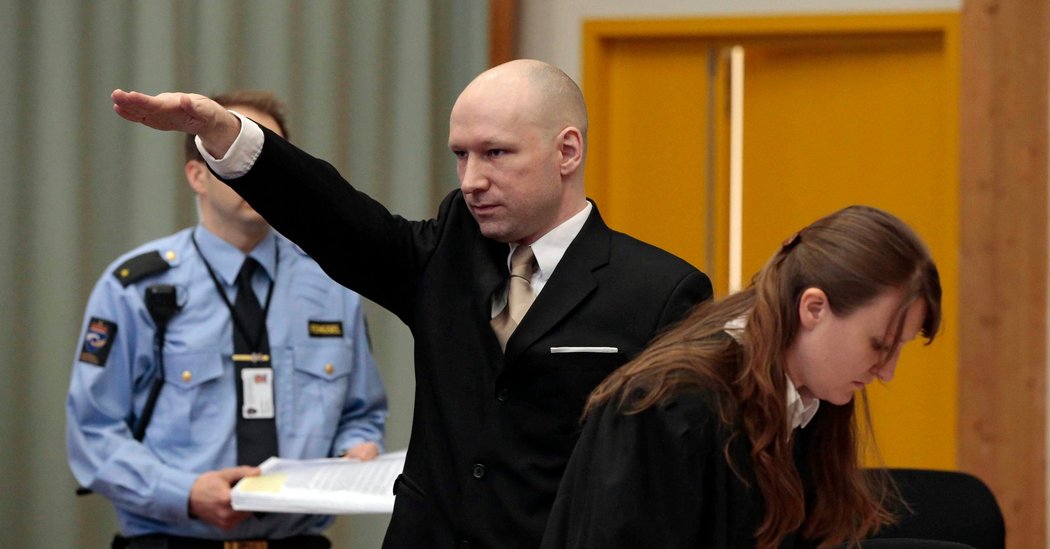Hey there, fellow explorers of the strange and unsettling. Today, I want to take you on a journey through one of the darkest chapters in modern history. This is the story of Anders Breivik, the man who murdered 77 people in one day. It’s a tale that chills the spine and boggles the mind, a story of terror and tragedy that shook an entire nation.
The Man Behind the Mask
Anders Behring Breivik was born in Oslo, Norway on February 13, 1979. He grew up in a relatively affluent neighborhood but had a tumultuous childhood. Estranged from his family, he found solace in far-right ideology and became deeply involved in extremist circles. Breivik’s growing discontent with Norway’s multicultural policies and the presence of Islam in Europe fueled his radicalization.
The Day of Horror
July 22, 2011, is a date that will forever haunt Norway’s history. On this day, Anders Breivik executed a carefully planned attack that left 77 people dead and an entire nation in shock. Here’s how the events unfolded:
2:09 p.m. — Anders Breivik sent out a manifesto titled “2083 – A European Declaration of Independence” to 1,002 email addresses, including those of Norwegian politicians and journalists. This manifesto outlined his far-right extremist views and his plans for the day.
3:17 p.m. — Breivik parked a white van loaded with a 950-kilogram bomb outside the government quarter in Oslo. Seconds after parking the van, CCTV footage shows a man dressed in a police special force uniform walking down the street. He then left in a separate vehicle heading for Utøya island.
3:25 p.m. — The bomb exploded, killing six women and two men. The explosion caused extensive damage to the government buildings and sent literal shockwaves through the city.
The Shooting Starts
5:17 p.m. — Disguised as a policeman, Breivik arrived in Utøya by boat, carrying an arsenal of weapons in a suitcase. He convinced the boat operators and camp organizers that he was there to secure the island following the Oslo bombing.
5:21 p.m. — The horror in Utøya began. Breivik started his shooting spree, targeting the young campers who were part of the Workers’ Youth League (AUF) summer camp. He killed a guard and a camp organizer first, then proceeded to stalk and murder 69 people, mostly teenagers and young adults. His killing spree lasted for over an hour, and he reportedly spared only one boy because he “looked like a right-wing person.”
6:34 p.m. — Armed police arrested Breivik without a fight. He was held on the island overnight and moved to a temporary prison the next day.
The aftermath of the attacks saw Breivik showing no remorse, instead defending his actions as necessary. The legal proceedings that followed were closely watched worldwide.
April 16, 2012 — Breivik’s trial began with him entering the court and giving a clenched fist salute. The court’s task was to determine his sanity and whether he could face justice.
August 24, 2012 — Breivik was sentenced to a maximum of 21 years in prison, a term that can be extended indefinitely as long as he is considered a threat to society. He serves his sentence in a high-security three-room cell with access to a gym and computer games but with little contact with other inmates.
The Motivation
What drove Breivik to commit such heinous acts? His manifesto, “2083: A European Declaration of Independence,” provides some insight. In this 1,518-page document, Breivik outlined his extreme right-wing views, railing against multiculturalism, Islam, and the Norwegian Labour Party, which he blamed for what he perceived as the degradation of Norwegian society. He saw his attacks as a necessary act of war, a gruesome wake-up call to Europe.
The Aftermath
Breivik was arrested in Utøya and later confessed to the attacks, showing no remorse. His trial began in April 2012, and in August of the same year, he was sentenced to 21 years of preventive detention, a sentence that can be extended indefinitely as long as he is considered a threat to society.
Norway, known for its humane prison conditions, has held Breivik in isolation. Despite his complaints about his treatment, including the quality of his video games and cold coffee, Norway has maintained its commitment to human rights and the rule of law.
The Impact
The 2011 Norway attacks had a profound impact on the country and the world. It sparked a national conversation about extremism, security, and the importance of upholding democratic values in the face of terror. Norway’s response, characterized by resilience and solidarity, stands as a testament to the strength of its society.
A Dark Legacy
Anders Breivik’s name is now synonymous with one of the darkest days in modern history. His actions serve as a stark reminder of the destructive power of hatred and extremism. As we explore these creepy, dark, and mysterious events of history, it’s crucial to remember the victims and the enduring impact of such tragedies.
So, there you have it, my friends—a glimpse into the life and mind of Anders Breivik, the man who murdered 77 people in one day. It’s a story that leaves us with more questions than answers, a chilling example of how one individual’s twisted ideology can lead to unimaginable horror.
Stay curious, stay informed, and most importantly, stay vigilant. Until next time, keep exploring the strange and unsettling corners of our world.

